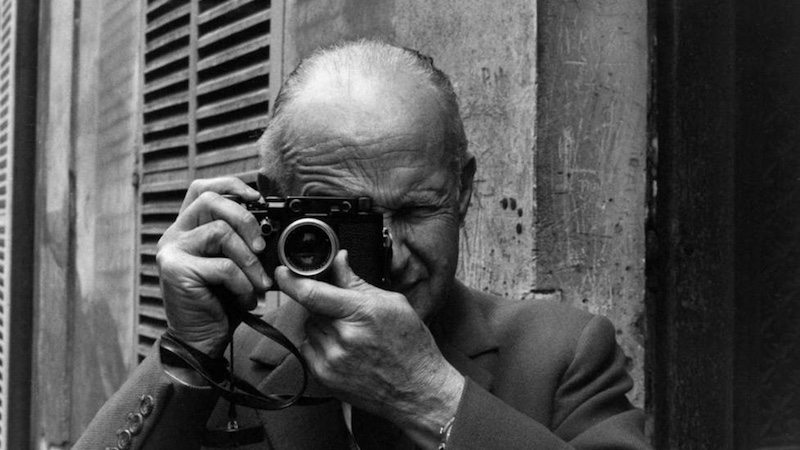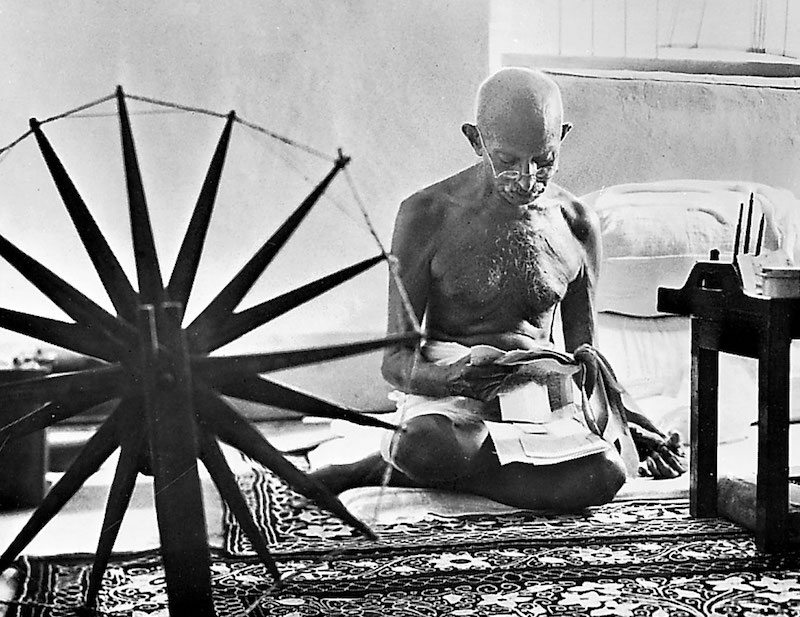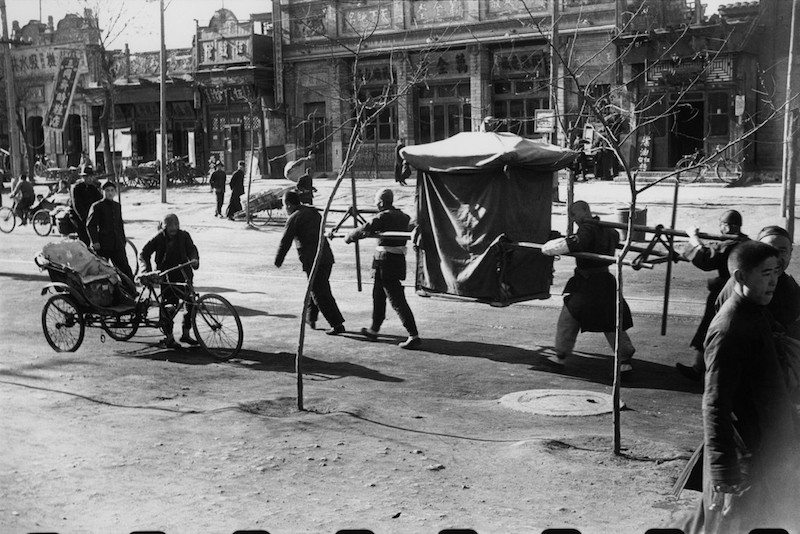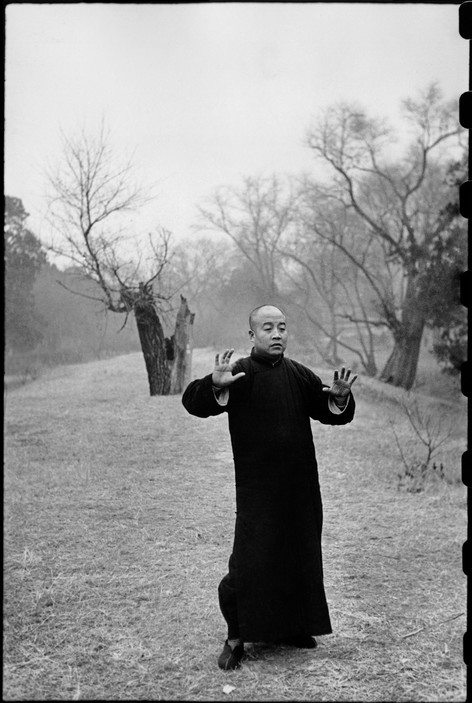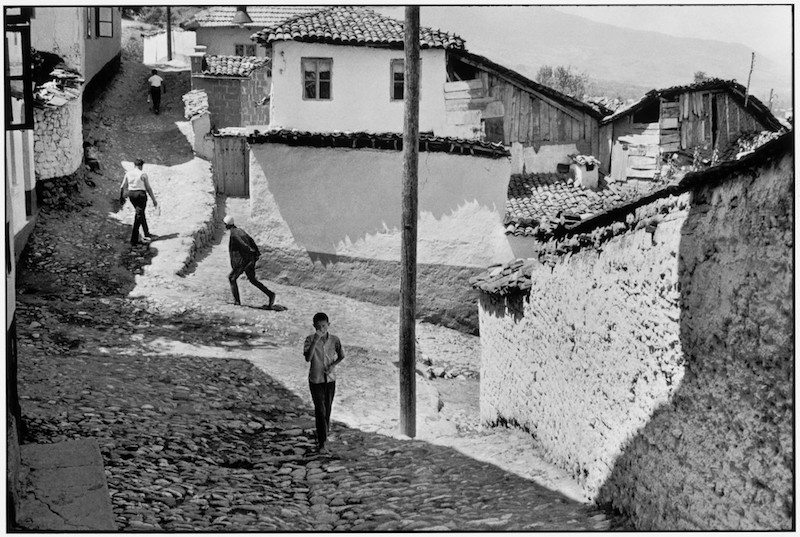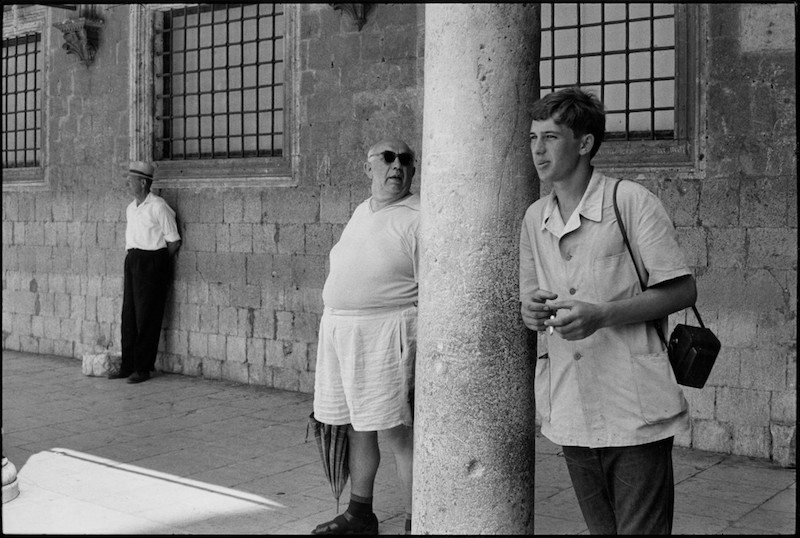Henri Cartier-Bresson
(1908–2004)
Episode #5 of the course Most famous photographers of all time
Henri Cartier-Bresson was perhaps the great humanist photographer of the 20th century. A Frenchman, Cartier-Bresson rejected the formal upbringing of his parents and studied painting, drawing, and philosophy under Cubist painters and at Cambridge University. He had discovered a fondness for photography already, but it was his travels to Africa in the summer of 1931 that set him on a path toward loving the medium.
Cartier-Bresson approached photography very philosophically but as an art form distinct from painting. He believed in decisive moments—what are called “stolen images” or “images on the run.” The moment, he believed, “took you,” as the photographer and the viewer, rather than you taking it. There was no thinking while shooting, only life in that moment.
After meeting Paul Strand in the 1930s, Cartier-Bresson abandoned photography for film and returned to France, working with filmmaker Jean Renoir until 1939. He would have returned to photography, but in 1940 he was captured by Germans during the invasion and occupation of France.
Cartier-Bresson freed himself after three years and two failed escape attempts. He returned to Paris, where he established a photography lab for the resistance. He was commissioned by the US after the war to direct a documentary about the return of French POWs.
When World War II ended, Cartier-Bresson spent years traveling through Asia. He photographed Mahatma Gandhi, weary and humble, a few hours before his assassination in 1948. Then, the Frenchman documented the funeral services, which were attended by thousands.
Cartier-Bresson captured images of the last Chinese imperial eunuchs in Beijing in 1948, as well as Indonesia’s rebellion and freedom from Dutch colonialism in the ‘50s. In 1952, Cartier-Bresson published his first book, Decisive Moment, which detailed his work over the span of 20 years, including the Spanish Civil War and the Chinese revolution.
Along with several other notable photographers, including Robert Capa, Cartier-Bresson founded the first freelance photographers’ agency, Magnum. The agency allowed photographers to publish in major periodicals without losing intellectual rights to their work. He spent the next decade freelancing for Life and other magazines.
He was the first photographer from the West to document the post-war Soviet Union in the 1960s. By the end of the decade, he had turned away from photography and returned to painting and drawing. By the 1970s, he was completely done with photography, saying that perhaps he had said all he could with that medium. Bresson continued to paint and draw for the rest of his life.
A notoriously shy and private man, Cartier-Bresson went to great lengths to avoid being photographed himself. When he spoke at Oxford University in the 1970s, he held a paper in front of his face. He detested interviews, thinking it strange that he should be famous for taking pictures. Having an unrecognizable face made it easier for him to photograph people as he pleased.
Cartier-Bresson worked almost exclusively on a 35mm camera with a 50mm lens. He only shot in black and white, never used flash, and believed in creating the image through the viewfinder. He had no interest in developing the photos and never allowed cropping or other darkroom manipulation. Cartier-Bresson believed when a moment passed, it was gone forever. If it was captured, it was real.
Recommended books:
“Henri Cartier-Bresson: The Decisive Moment” by Henri Cartier-Bresson
“Henri Cartier-Bresson: The Man, The Image & The World” by Jean Clair, Philippe Arbaizar
Share with friends

